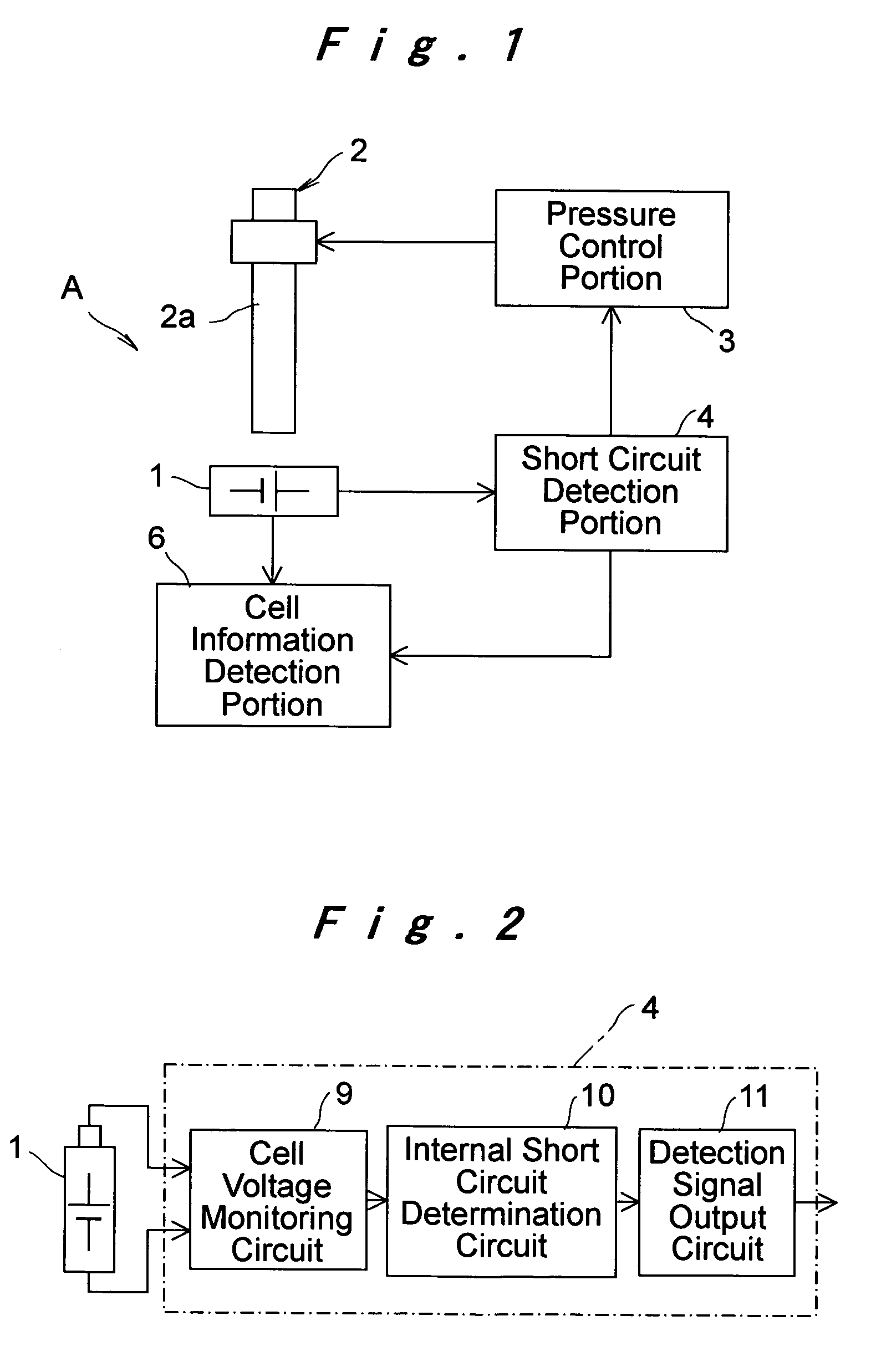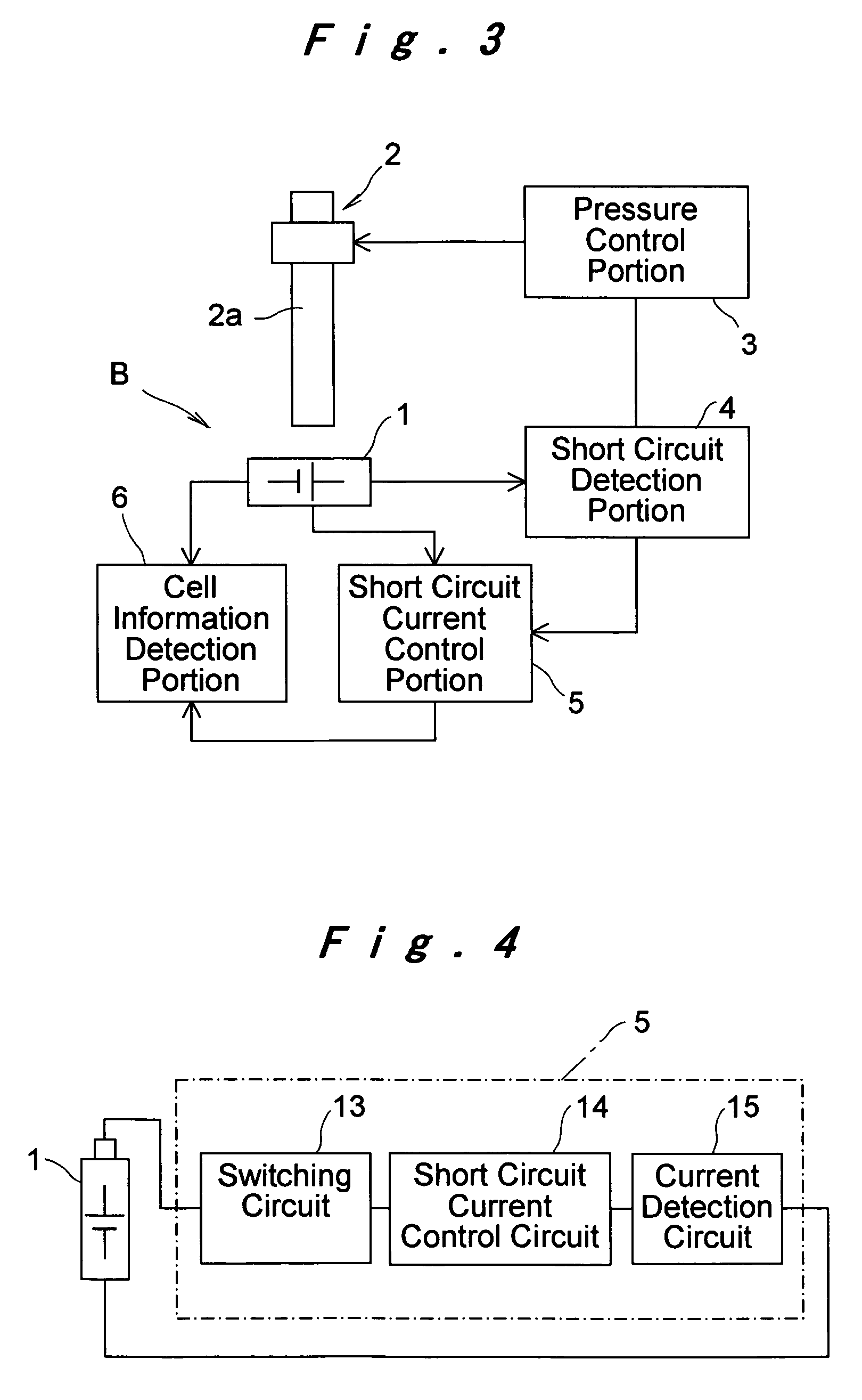Cell evaluation device including short circuit detector
a short-circuit detector and cell-based technology, applied in secondary cells, electrochemical generators, instruments, etc., can solve the problems of inability to adapt to safety functions, and inability to accurately determine the cause of cell temperature variation, etc., to achieve the effect of minimising the variation in the increase of cell temperatur
- Summary
- Abstract
- Description
- Claims
- Application Information
AI Technical Summary
Benefits of technology
Problems solved by technology
Method used
Image
Examples
first embodiment
[0020]FIG. 1 shows the structure of a cell evaluation device A according to a A test cell 1 disposed in a predetermined position is connected to a short circuit detection portion 4 and a cell information detection portion 6, in order to enable control of a pressurized state caused by nail penetration or crushing of the test cell 1 by a pressurization portion 2, and enable detection of the state of the pressurized test cell 1.
[0021]The pressurization portion 2 comprises a rod 2a which is extended towards the test cell 1 using a pressurization device not shown in the figure. A nail penetration test will be conducted by fitting a nail to the tip of this rod 2a, whereas a crush test will be performed by fitting a flat plate or apiece of squared timber to the tip of the rod 2a. The pressurization device is capable of applying a pressurization force of 0.1 to 30 kN to the rod 2a at a pressing speed of 0.1 to 180 mm / s. A variety of pressurization systems may be used for the pressurization...
second embodiment
[0031]Next is a description of a cell evaluation device B according to the present invention, with reference to FIG. 3 and FIG. 4. This embodiment enables the evaluation of states which artificially reproduce either a state wherein other cells are connected in parallel to the test cell subjected to the nail penetration test, or a state in which the test cell has degraded, leading to increased internal resistance.
[0032]Cells are not always used in isolation, and in many cases, a plurality of cells are connected together in a series and / or parallel arrangement. When an internal short circuit occurs, if another cell is connected in parallel, then short circuit current is also supplied to the short circuited cell from the other parallel cell. This excessive current causes an increase in the extent of the cell temperature increase caused by the internal short circuit, meaning a device that is capable of artificially reproducing this situation of parallel connected cells offers an extreme...
PUM
| Property | Measurement | Unit |
|---|---|---|
| pressing speed | aaaaa | aaaaa |
| pressurization force | aaaaa | aaaaa |
| charging voltage | aaaaa | aaaaa |
Abstract
Description
Claims
Application Information
 Login to View More
Login to View More - R&D
- Intellectual Property
- Life Sciences
- Materials
- Tech Scout
- Unparalleled Data Quality
- Higher Quality Content
- 60% Fewer Hallucinations
Browse by: Latest US Patents, China's latest patents, Technical Efficacy Thesaurus, Application Domain, Technology Topic, Popular Technical Reports.
© 2025 PatSnap. All rights reserved.Legal|Privacy policy|Modern Slavery Act Transparency Statement|Sitemap|About US| Contact US: help@patsnap.com



